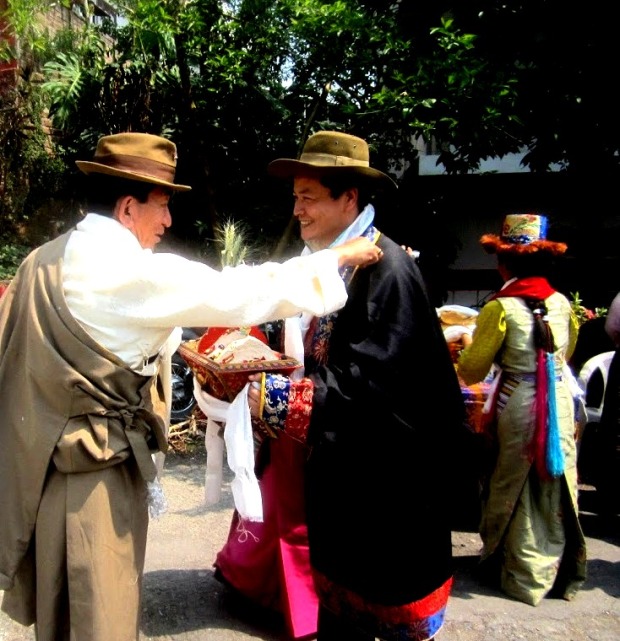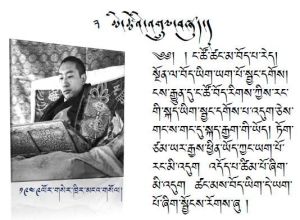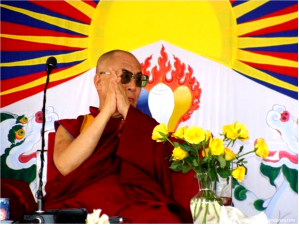
Two young monks playing together in a monastery
I met my cousin, Lobsang, a monk, for the first time at a prayer meeting, more than a decade ago. Jho-la (or brother), who was in his early twenties at the time, had escaped from Tibet into exile barely a year ago.
In the Tibetan world, it is not uncommon to hear stories of reunions among family members at the most unlikeliest of places. However, Tibetans, being devout Buddhists, were more likely to have such reunions during Buddhist teachings or at Buddhist holy sites which see Tibetans pilgrims from all over the world.
My family and I met Jho-la at one such prayer meeting. At the time, His Holiness the Dalai Lama was teaching at one of the large monasteries in South India and my family was there with thousands of other Tibetans to receive the initiations.
Tibetan Buddhist teachings usually last several days, as the teacher imparts knowledge on whole texts written by the Buddhist masters of the Nalanda school. A large majority of the devotees who receive these initiations are monks and nuns. These teachings are scheduled several months or even years in advance, thus allowing the monks and other lay devotees to plan their travel in advance.
Like most monasteries, the monks from Jho-la’s monastery had all traveled down to South India together to attend the teachings. My mother knew the abbot of that monastery, who, in turn, through his conversations with my brother had somehow ascertained that Jho-la was a relative of my mother’s. He, of course, came to this conclusion after finding out Jho-la’s family name (Tibetans have family names, rather than surnames); finding out his place of origin; checking if he knew the names of my mother’s family; and verifying certain details about their life to determine if Jho-la was in fact related to my mother. And he was!
I was very excited to meet Jho-la! Being the teenager that I was and having read too many Russian novels at the time, I saw this almost as a dramatic meeting of families, who had, thus far, been torn apart or made to exist separately because of the tough political conditions in one’s own country. And it was in a way true!
During that first meeting, my father and mother asked Jho-la a lot of questions about folks back in Tibet and of his plans to study Buddhism in India. We sat for several hours on end, with my parents mostly doing the asking and Jho-la answering all of their many queries. Sometimes, the answers were long, drawn-out explanations of the changes that had occurred — to people and places — and at other times, the answers were shorter, crisper, as though Jho-la was almost unwilling to say too much.
I sat quietly in a corner during this exchange. Occasionally, Jho-la turned to me and asked me a question — Do you go to school? Where do you study? Do they teach you Tibetan in your school? How far away is your school? How old are you?
Each time the questions came my way, I responded enthusiastically. But soon it was time to leave; I nudged at my father’s Chuba (Tibetan traditional robe) and slipped into his hand a crisp 500 Indian Rupee note that was my pocket money at the time. My father understood. He added a few more notes of his own to my 500 and gave that to Jho-la, with a plea that he reach out to us if he ever needed anything. After all, we were really the only family or the closest to it that he had in exile!
We said our goodbyes and promised Jho-la that we would visit him at his monastery in North India, whenever we were traveling in the area. My parents and I had walked a couple of steps ahead, when I ran back, asked for a book to scribble on and a pen to write with, and hastily wrote down our home address. You see, the internet and mobile phones weren’t yet the rage then as they are now.
Rightly enough, a year later, a letter came home from Jho-la, announcing that he had moved monasteries and was now closer home to his new family in exile.

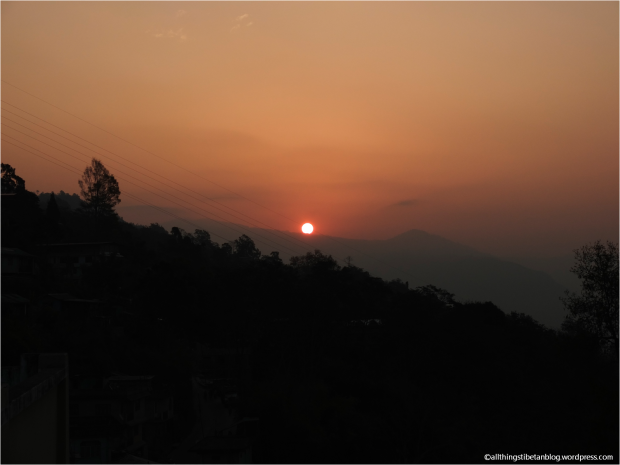

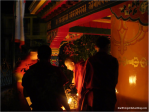 Despite my fascination with monasteries and their golden rooftops, there’s nothing more fascinating than a day in the life of an ordinary Buddhist monk, who has avowed to a life of discipline, celibacy and dedication to the Buddha Dharma.
Despite my fascination with monasteries and their golden rooftops, there’s nothing more fascinating than a day in the life of an ordinary Buddhist monk, who has avowed to a life of discipline, celibacy and dedication to the Buddha Dharma.